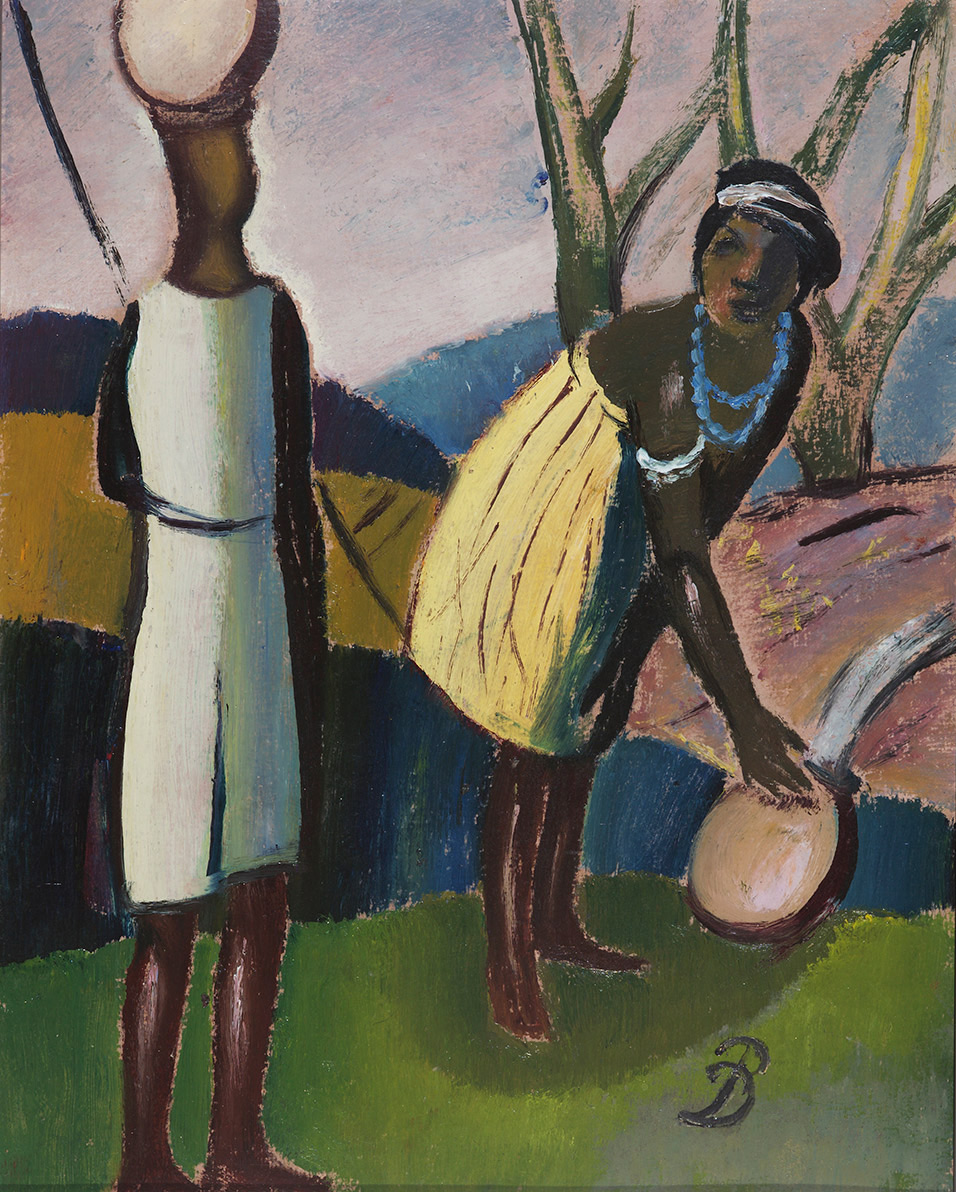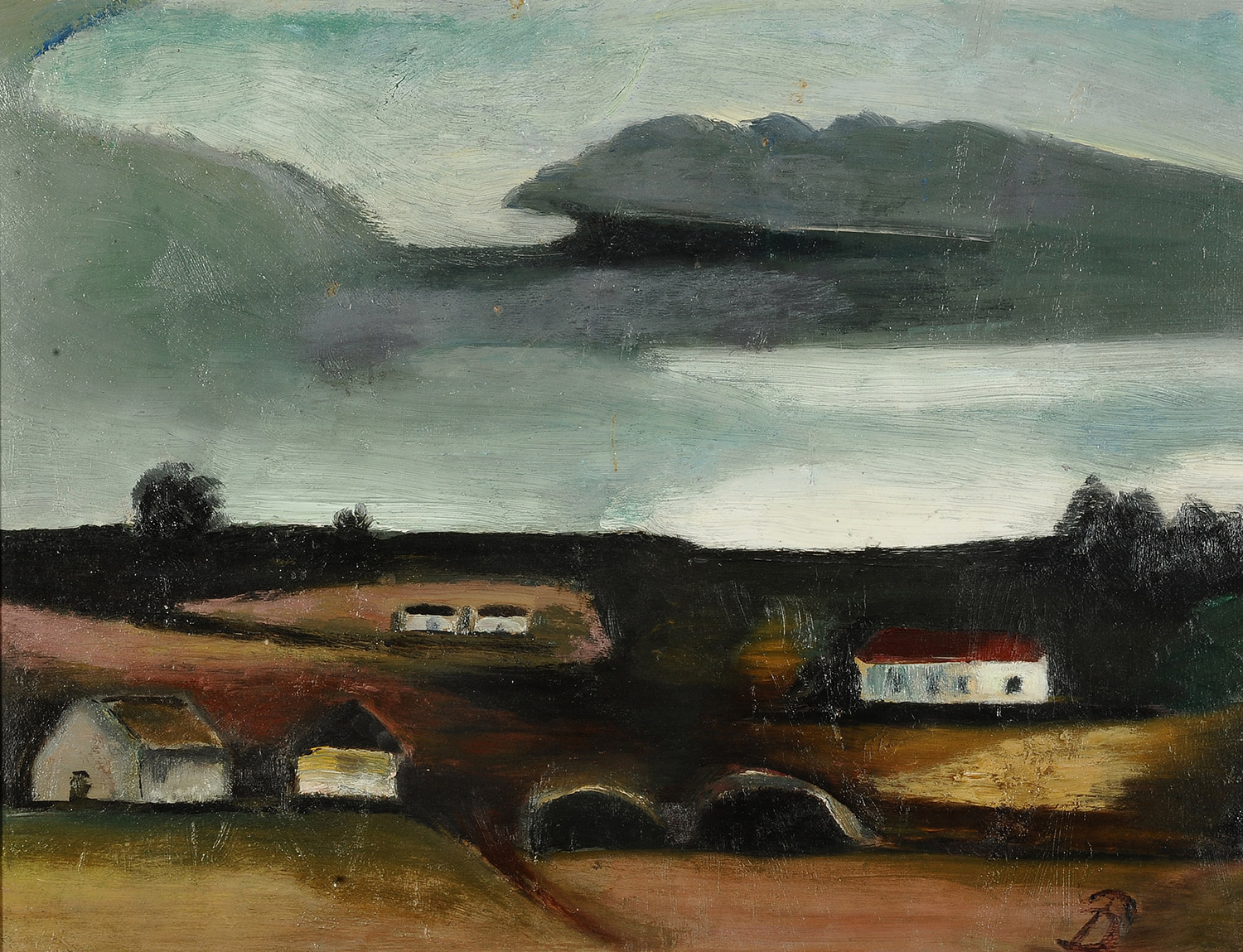Pranas DOMŠAITIS (1880 – 1965)
BIOGRAPHY
Pranas Domšaitis (born Franz Karl Wilhelm Domscheit) was a Prussian Lithuanian painter.
Born in Cropiens (now in Guryevsky District), a village in East Prussia near Königsberg, Domšaitis spent his first 27 years as a farmer. Under the sponsorship of Max Liebermann, he enrolled at the Royal Academy of Fine Arts in Königsberg in 1907, graduating in 1910. This was his first formal schooling.
He then travelled to and studied in various European capitals. He was strongly influenced by a meeting with Edvard Munch. He spent World War I partially on his parents’ farm and partially in military service, and then resumed his travels and artistic career.
His successful exhibitions in Germany, Switzerland, Austria, Romania, and Turkey were disastrously followed by his inclusion in a 1937 exhibition of artworks that were denounced as ‘degenerate art’ (a term adopted in the 1920s by the Nazi Party in Germany to describe modern art) and the removal of his works from German museums. In 1938, he began signing his pictures using the Lithuanian version of his name (he had taken Lithuanian citizenship in 1920). He spent the war painting ‘harmless’ still lifes.
In 1949, the University of Cape Town offered his wife, the singer Adelheid Armhold, a position as a senior lecturer. He spent the rest of his life in South Africa.
His youthful style has been described as romantic realism or spiritual impressionism, and his later style as expressionist visions resonant with colour and piety. Landscapes and village life were frequent themes, along with Christian narratives, particularly the Annunciation, the Crucifixion and the Flight into Egypt.
Domšaitis’s works are held at the Pranas Domšaitis Gallery in Klaipėda, Lithuania, the MK Čiurlionis National Art Museum in Kauna, Lithuania, the Pretoria Art Museum, the National Gallery of Zimbabwe and the National Gallery in Berlin, among others. Many of his interwar works have disappeared.



